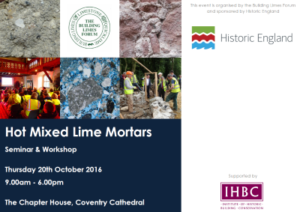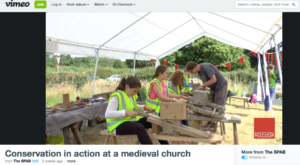The Pride of Place project being conducted by Historic England has led to new listings and a greater recognition of the importance of LGBTQ heritage.
Historic England writes:
The grave of writer, musician and Egyptologist Amelia Edwards has today been listed by the Department for Culture, Media and Sport. Five other places with queer histories have also been relisted, and one upgraded, including the London home of Oscar Wilde and the house where Benjamin Britten lived with his partner, the tenor Peter Pears.
The listings are a result of Historic England’s ground-breaking research project Pride of Place, led by historians at Leeds Beckett University’s Centre for Culture and the Arts, and the Leeds Sustainability Institute.
This is part of a major initiative from Historic England to improve understanding and recognition of England’s diverse heritage, tackling under-recognition of the major influences and contributions of communities including LGBTQ, Black and Minority Ethnic Groups, disabled people and women in building the nation we live in.
Amelia Edwards was one of the key founders of modern Egyptology, an advocate for women’s rights, a daring traveller and an unflinching writer who challenged social prejudices. Remembered as an unconventional, dignified woman who had lasting relationships with women, she is buried beside her beloved long-term partner Ellen Braysher in St Mary’s Churchyard, Bristol. Their grave, adorned by an ankh (Egyptian cross) to mark Amelia’s study of ancient Egypt, has been newly listed at Grade II.
Among the listings updated to record their LGBTQ histories are 34 Tite Street in London, where Oscar Wilde lived with his wife until his trial for ‘gross indecency’ in 1895; Red House, where the composer Benjamin Britten lived with his partner, the tenor Peter Pears; the 1930s home of Gerald Schlesinger and Christopher Tunnard, masterfully designed so that the couple’s bedroom could be split into two separate rooms meaning they could preserve their privacy, and a memorial, newly upgraded to II*, which remembers among others the life of 18th century Chevalier d’Eon, who in today’s terms might be understood as transgender.
Shibden Hall is also recognised as the place where Anne Lister, described as the ‘first modern lesbian’, lived in the early 19th century and kept detailed, partly coded diaries of her relationships with women. The diaries were at one time kept hidden in the wall of an upstairs corridor at Shibden by a descendant who wanted to keep them secret.
These stories and other hidden histories have been uncovered through the Pride of Place research project, which has seen members of the public share information about the LGBTQ buildings and places special to them via an online map.
Over 1600 contributions have been made so far, through individual posts and shared stories at group ‘pinning parties’. We are encouraging people to keep adding their stories to the map as the 50th anniversary of the partial decriminalisation of homosexuality approaches in 2017. Some of the pins have been grouped into themed ‘tours’, for example on Queer Performance in London or LGBTQ places in Morecombe and Lancaster, and can be found as part of the map. The findings have now been distilled and shared online to bring our fascinating LGBTQ history to a wider audience.
Among the uncovered LGBTQ histories is the work of book illustrator, textile designer and lesbian Enid Marx. In 1936 she designed the fabric for the London Underground train and bus seats which remain a part of every Londoner’s daily life. The project also highlights the surprising story of Fred Dyson, a worker at Goldthorpe Colliery in Yorkshire, who feared being cast out by colleagues after his conviction for cottaging in the early 1960s but instead was welcomed, even congratulated, by his workmates. One said: ‘Fred, if thou can admit to being a poof all thou life, thou are a better man than us. Have a pint’.
A new guide has also been produced to show communities how to uncover the history of and protect LGBTQ buildings that are vulnerable to redevelopment. The guide will help ensure that LGBTQ-related buildings, gardens, monuments and other historic places are properly understood and the most important of these recognised in planning decisions.
Heritage Minister Tracey Crouch said: ‘It’s so important when we protect our heritage that we recognise all of the communities that have influenced and shaped our history. It’s fantastic news that so many buildings with such a rich history have received the important protection that they deserve.’
Duncan Wilson, Chief Executive of Historic England said: ‘Historic Buildings and Places are witnesses to events that have shaped our society. They hold real and tangible evidence of the way our nation has evolved. Too often, the influence of men and women who helped build our nation has been ignored, underestimated or is simply unknown, because they belonged to minority groups. Our Pride of Place project is one step on the road to better understanding just what a diverse nation we are, and have been for many centuries. At a time when historic LGBTQ venues are under particular threat, this is an important step. The impact of the historic environment on England’s culture must not be underestimated, and we must recognise all important influences.’
Professor Alison Oram, lead researcher at Leeds Beckett University, said: ’Pride of Place has been a real passion project for our team. We’ve had a tremendous response to it from people across the country, who have pinned their favourite LGBTQ heritage places on our crowd-sourced map. It’s been wonderful to meet and discuss the project with many diverse LGBTQ communities. We are delighted to see our research brought to life in the Pride of Place online exhibition which gives everyone a chance to learn more about the fascinating stories embedded in the streets, parks and historic buildings all around us. Queer heritage is everywhere, and we hope that Pride of Place will lead to more historic places being publicly valued and protected for their important queer histories.’
In a separate piece of work, Historic England has also created ‘Walk History’, a free walking tour app available on any mobile phone, which guides users through more than 130 years of alternative lifestyles in Soho. The walk visits those hidden and sometimes forgotten places that have kept this iconic area queer, from the late Victorian era to the present day. It’s part of a wider series of walks that explore the unique character of places in London that are facing huge change and makes up part of Historic England’s ‘Keep it London’ campaign.
read more….








